by Zan Raynor, certified dog trainer and CEO of ELLAS Animals INC
I train dogs but, more importantly, I teach people how to train dogs through ELLAS Animals INC. I specialize in service dogs, but I work with people who are training therapy dogs, ESAs, and pets, too. Part of my job is to figure out what makes people successful training dogs so I can incorporate that knowledge into our online courses. Another part of my job, though, is to figure out why teams (the human trainer and the dog learner) fail to achieve their goals so I can help teams avoid these pitfalls. As such, I spend a lot of time pondering why any particular team gives up and what tools, skills, or information I can provide to help teams overcome these challenges. One of the clear conclusions I’ve arrived at is that adolescent fear periods in dogs often present a hurdle that a less experienced dog trainer doesn’t know about or how to get through.
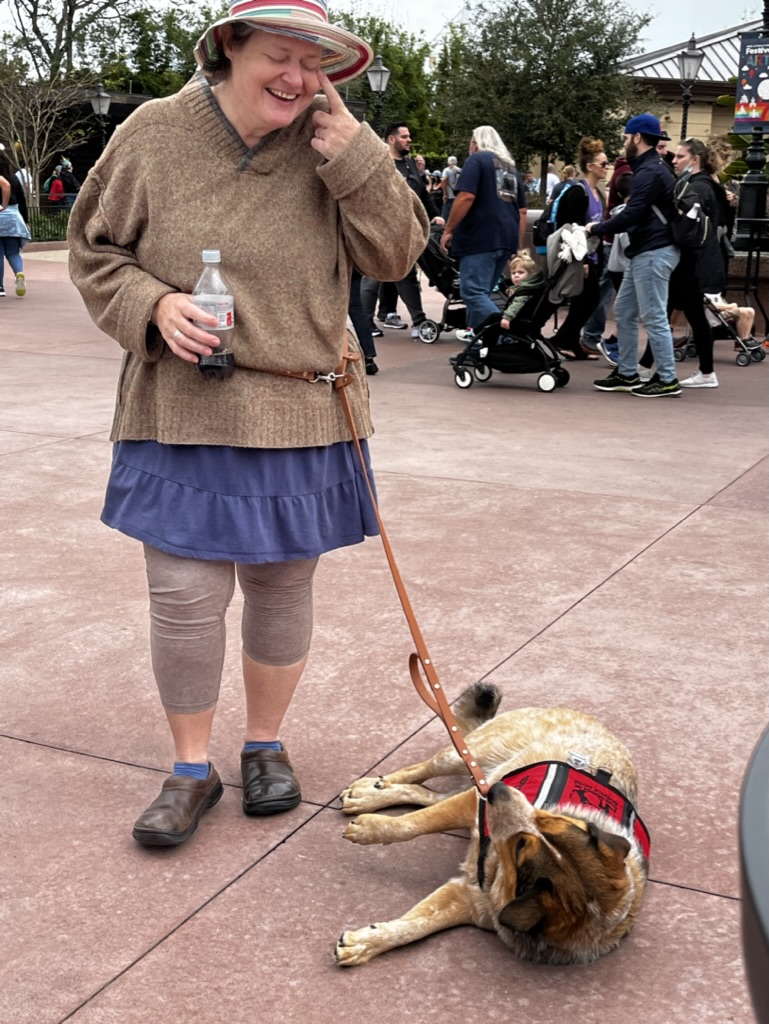
People give up during adolescent fear periods
Adolescent fear periods in dogs are the most common reason why pets are surrendered to shelters and why service dogs in training are “washed” or career changed and their training as service dogs is abandoned. The thing is, people don’t know that it’s an adolescent fear period they’re dealing with, because if they recognized it and knew how to proceed with it, they wouldn’t surrender or wash their dog. It’s my goal to help people recognize the timing and signs of adolescent fear periods in dogs and provide them with practical strategies to get through these challenging periods without damaging their relationship with their dogs but in fact strengthening that relationship and the dog’s training.
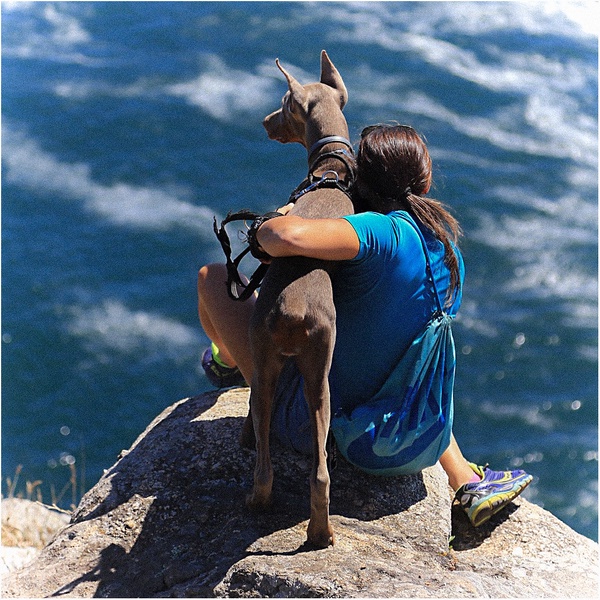
Puppies perform better before their adolescent fear periods
There’s a reason we see four, five, and six month old puppies confidently prancing their way through obedience tests while their trainers trot alongside them, smugly looking down their noses at the unruly twelve and eighteen month old dogs and their harried, ashamed, and discouraged trainers. Those darling prodigies simply haven’t hit any adolescent fear periods yet. It’s actually quite common for puppies to pass a Canine Good Citizen or Public Access Test that they are unable to pass six months or a year later while caught in the grip of teenagehood. That’s because the cute omg-I-can’t-believe-how-smart-she-is-and-how-fast-she’s-learning! puppy suddenly morphs into the “stubborn”, “lazy”, “dumb”, “uncooperative”, “scared”, “hyper”, “destructive”, or “aggressive”/”reactive” dog. How often I hear these adjectives used to explain why the trainer no longer believes their dog has the “right temperament” to succeed as a service dog!
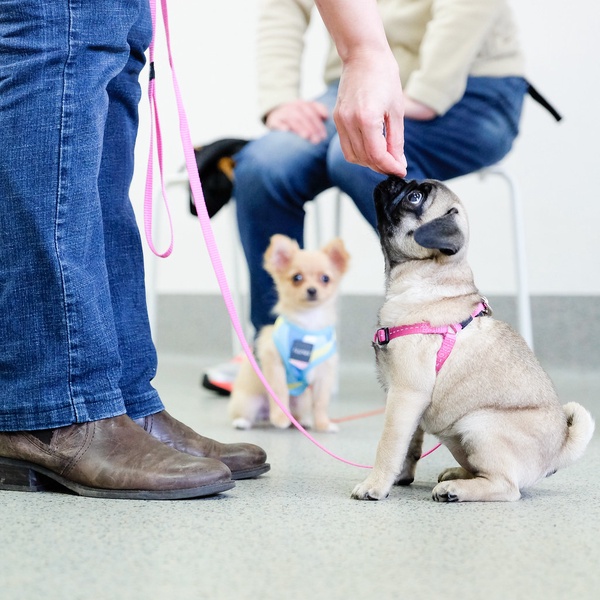
People give up during adolescent fear periods because they don’t recognize what they are or know how to deal with them
There are many statistics tossed around in dog training and service dog training, one of the most common being that only one in five dogs will succeed in becoming a fully trained service dog. While there are certainly some disqualifiers inherent in dogs (e.g. health issues or true aggression), I believe most of that harrowing statistic is inherent in the trainer, whether lack of experience, knowledge, physical and/or mental capacity, time, patience, determination, or whatnot, and can be overcome. With regards to adolescent fear periods in dogs, it may reflect lack of experience and knowledge as well as patience. If a trainer is looking for a dog that won’t go through an adolescent fear period, they’re better off starting with a dog who is two years old, because all dogs go through fear periods, although they may present quite differently in various breeds and individual dogs.
Adolescence
Adolescence and fear periods are two different things in dogs, but I’ve chosen to deal with them together here because it is specifically the adolescent fear period that typically results in a dog’s trainer losing confidence. Adolescence, and fear periods, are a normal and necessary part of a dog’s development and fear periods have been refined by evolution to ensure the survival of the fittest, or in this case, of the fear-est. During the adolescent fear periods, dogs develop the “fight or flight” instinct that ensures they can survive dangers. In fact, the frustrating “single-event learning” phenomenon, for example a dog has a single traumatic experience with a vacuum cleaner that they never get over, has an evolutionary purpose. Dogs don’t need to encounter something life threatening more than once to learn that it should be avoided. We trainers just get frustrated that this more often happens with vacuum cleaners rather than jungle tigers.
Ranking
Adolescence actually starts earlier than we expect in dogs, usually around four months, which corresponds with when most puppies are fully vaccinated and begin to see more of the world. This is when puppies are “ranking” or finding their place in the litter/pack/social structure in which they find themselves. In a single dog family, this means they’re finding their rank within the human family and they have to test each member of the pack, from the parent to the toddlers to see where they fit in. It may feel like “testing” or “pigheadedness” but it’s an important part of their social development. Most trainers advise keeping calm, staying consistent, and being as pigheaded as the dog: “Take your time settling down – I have all day to stand here with your food until you do.”

Exploring
From four months old to about eight months old, puppies are increasingly exploring their world – by wandering, chewing, and stretching boundaries. It’s not uncommon for dogs in this age range to “run away” and not come back when they’re called but rather only when they’re good and ready. People often ask me why the chewing is getting worse rather than better, even though teething is thought to be over. I recommend management techniques to get through this time. Using a crate when they’re unsupervised, combined with carefully putting away all tempting shoes and whatever else you don’t want your dog to chew on while providing plenty of appropriate toys for your dog to chew on, can protect your house. When that puppy who always stayed close without a leash now starts to wander away, a very long lead can give them freedom to explore while keeping them safely tethered. Also, while exercise is important, rather than trying to exhaust your dog, try providing (and participating in) smart toys and games inside that engage your dog’s brain and continue broadening his understanding of the world.
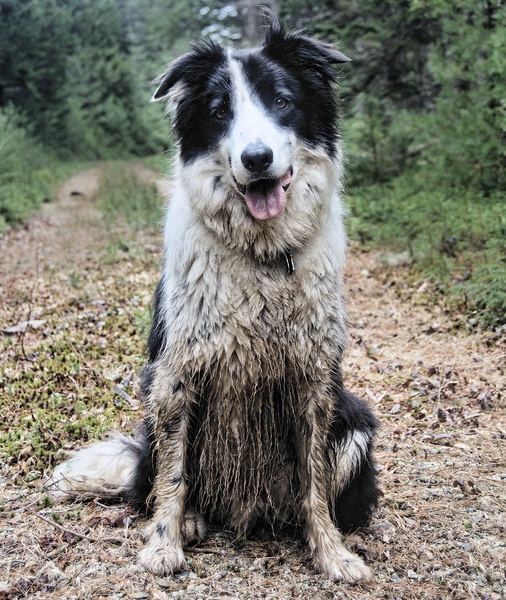
Puppy fear periods
Fear periods in dogs are critical reorganizations of their brains, preparing them mentally and physically for increased independence and self-sufficiency. Therefore it comes as no surprise that the first fear period is actually before adolescence, when a puppy is 8-11 weeks old. This coincides with when a puppy is typically removed from its mother and littermates and placed in a new human home. We’re not particularly surprised to find a puppy in a new home is a bit skittish and unsure and that it takes a couple of weeks to adjust to their new environment without their canine family. It also overlaps the strongest window of socialization which is why broad and positive experiences are so important during this time. Truthfully, most people miss recognizing this fear period because we expect it and think it makes sense, given the major upheaval in their lives.
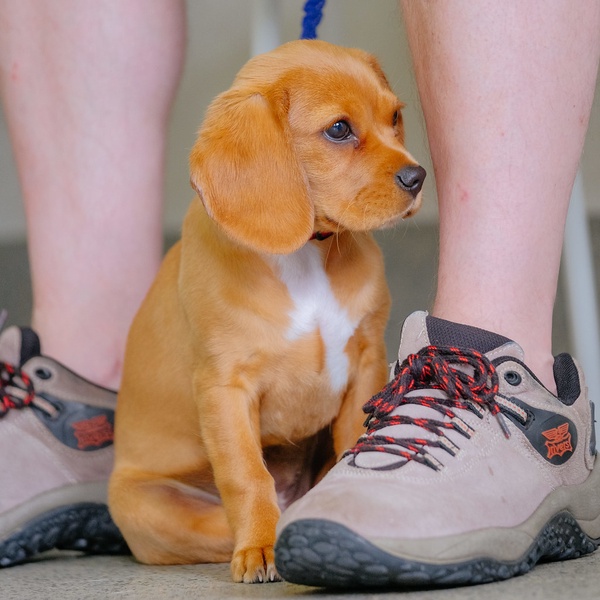
Adolescent fear periods
By comparison, the adolescent fear periods in dogs are much less predictable. There may be only one, somewhere between six and eighteen months, or there may be many, coming and going with a frustrating unpredictability until the dog is about two years old, when most dogs reach physical, emotional, and social maturity. While smaller breeds tend to experience adolescent fear periods earlier than larger breeds, this is not a hard and fast rule. While adolescent fear periods tend to last two to three weeks like a puppy fear period, in some dogs they may linger for several months at a time.
Sudden onset of symptoms
Fear periods may feel difficult to recognize because they present differently in every dog. One of the most typical signs, though, is the sudden onset of “symptoms”. Yesterday you had a confident, engaged, smart puppy and today you have an insecure dog worried about harmless objects. The puppy who was friendly, bold, and adventurous turns instantly timid, shy, and hesitant. We search our memory for some traumatic event that precipitated this and can think of nothing. It’s never a bad idea to have a check-up with your veterinarian to ensure that a sudden personality change doesn’t reflect infection, pain, or even allergies, but when this has been eliminated, we’re left with the likelihood that this sudden Jekyll/Hyde transformation is an adolescent fear period.
Fear is often mistaken for other things
Another reason adolescent fear periods in dogs may be hard to recognize is because not all of the new behaviors seem like fear responses to humans. Sure, you may recognize fear in cowering, hiding, tucking the tail, pinning back the ears, hanging the head, whining, and even submission urination (don’t punish your dog for this; they literally can’t control it). Harder to recognize is that stubborn, lazy, dumb, uncooperative, scared, hyper, and destructive may also reflect your dog’s fear. A dog that’s afraid of something isn’t going to be quickly obeying your commands and may well be acting out to relieve their stress. (Sometimes I hear about dogs that aren’t food motivated. Every dog is food motivated. You just haven’t found a food that outweighs their interest in or fear of something else. Dogs don’t generally accept food when they’re scared.) Hardest yet to recognize is that fear can also be shown by freezing, balking or bolting, raising hackles, panting, and licking their lips. Even more challenging, sometimes those huge no-no’s of good dogs – growling, barking, snapping, biting – aren’t actually signs of aggression but rather fear.
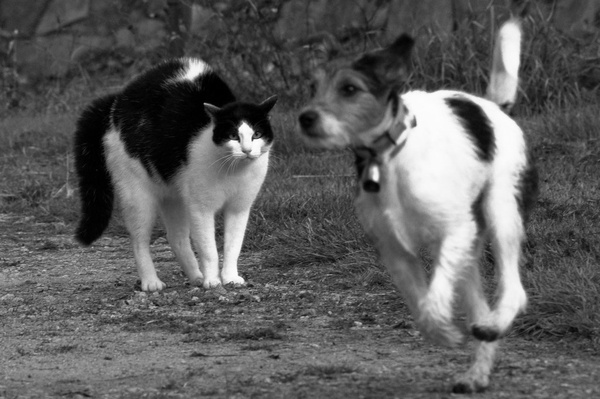
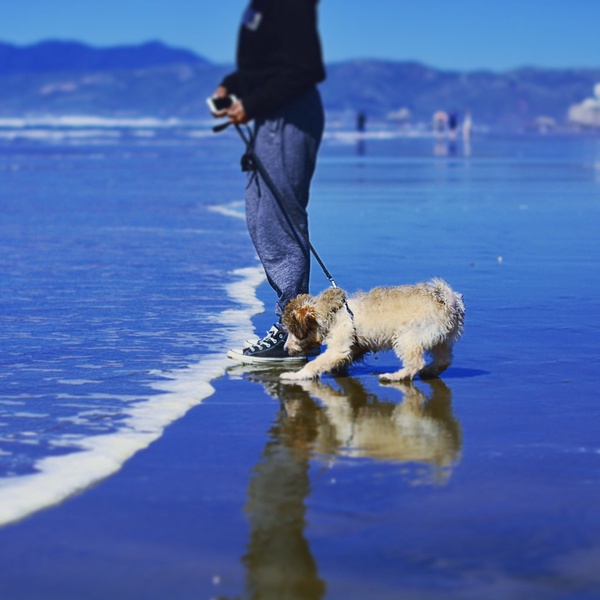


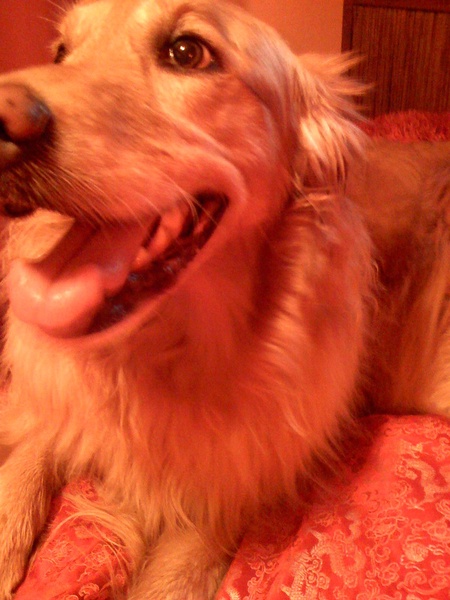

Why service dogs are washed during adolescent fear periods
Herein lies the biggest threat to service dogs in training. The “right temperament” for a service dog candidate excludes being too timid and scared or being aggressive. The idea is that a timid dog may take too long to train or never do well when encountering new situations, but also that fear is one of the primary reasons a dog may bite. Obviously, dogs that bite aren’t cut out to be service dogs. The challenge during adolescent fear periods is to recognize what is presenting as possible aggression may just be the natural expression of the dog’s fear and it may pass along with the fear, giving birth to a mature, well-adjusted, and non-threatening working dog.
Why pets are surrendered to shelters during adolescent fear periods
The threat to pets is even broader. The largest category of pet dogs surrendered to shelters are adolescents. People explain that the dog is too hyper, too destructive, too stubborn, often blaming the breed by saying it is “just too high energy for me” (which can be true in some cases but is almost always true of every dog during adolescence). People think the toughest part of raising a dog is having a puppy and it’s true that’s no picnic: sleepless nights while potty training and crate training, nicks in skin and clothing from sharp puppy teeth, and seemingless endless rounds of expensive vaccinations. In reality, this is short-lived and within 2-3 months you probably have a vaccinated, crate trained, potty trained pup who knows basic obedience commands. The toughest part of raising a dog is actually the adolescent fear periods that convince you that you’ve made a terrible mistake and you’re not cut out for having a dog or that you chose the wrong breed or the wrong individual dog. They seem to come and go and last forever, convincing you that this is what your dog is really like and they’re never going to get better. That’s not true. Almost every dog and every breed can come through the adolescent fear periods and develop into pleasant and mature dogs. Just have faith and persevere. You and your dog are going to get through this. As the saying goes, when you’re going through hell, keep going – that’s a terrible place to stop.
Hope has one caveat
There is one huge caveat to this claim and to the advice I’m about to give you for navigating the adolescent fear periods in dogs. All of this rests on the presumption that you are training your dog – not necessarily as a service dog or a sporting dog, but at least as a good roommate and happy pet. If you’re one of those people that keeps going through dogs, trying to get the right breed or individual dog that won’t be a problem, who thinks that a dog either is well-behaved or not, who is waiting for a dog to magically understand and do what you think a dog should do, you’re going to be as disappointed by your post-adolescent dog as you are by your adolescent dog. However, if you’re one of those people who knows that every dog needs training, every dog can be trained, and that it takes deliberate, intentional, and strategic training to teach a dog how to live in the human world, adolescence may be frustrating but it is something you can overcome with the same patience and determination that you apply to all dog training.

How to navigate adolescent fear periods in dogs
- Always be on the lookout for fear periods. Know the signs and be aware of your dog’s responses and changes. This way you won’t panic and overreact to poor behavior during adolescent fear periods that don’t reflect their true temperament or potential.
- Don’t push dogs to confront their fears. Don’t drag them, push them, or lure them closer to what they’re afraid of. Let dogs choose whether, when, and how to approach. Let them move closer and move back and investigate at their own pace and in their own way. Praise them when they move in to investigate and praise them when they return to you or even look to you for guidance.
- Don’t make a big deal out of what your dog is afraid of. Don’t overly comfort and pamper your dog, but just reassure them that you’re close and everything is fine. Stay calm and act nonchalant, even when your dog freaks out. Just calmly move away from the trigger.
- Log what triggered your dog. Keep a list and try to incorporate those things into future training sessions.
- Keep training sessions short during active fear periods but continue reviewing the commands and skills they already know, even if you have to choose carefully where, when, and what you train to avoid getting too close to those triggers. Don’t stop training all together because your dog isn’t paying as much attention to you or obeying you as quickly. Just keep plugging away. You’ll probably find that between fear periods, and once your dog is reaching maturity, all of their skills come together suddenly, much quicker than you expected, because they didn’t disappear but have been there all along, waiting for the fear to dissipate.
- Incorporate triggers into the training by figuring out how to take the power out of the trigger. It may be as simple as leaving the vacuum cleaner out in the room but turned off or it may mean staying a certain distance away from a trigger. For example, if other dogs or certain types of people cause your dog to react fearfully in a way that seems aggressive, figure out how far away you need to stay from that trigger so your dog isn’t reacting. Outside of this threshold, do your regular training, like sit, down, and come. You may find that you can gradually move closer and closer to the trigger but if you see your dog lose focus to obey commands or start to react with fear or aggression, move farther back again.
- Don’t introduce a lot of new or challenging things during an active fear period. Just review what your dog already knows to maintain those skills but don’t push all sorts of new commands. Don’t give in to your own fear that you’re moving too slowly or no longer making progress. That comes together again later, when your dog isn’t in an active fear period. There’s always time to add these new things later, when the time is right and your dog is in the right headspace to learn again. As the saying goes, train the dog that shows up that day. All plans and schedules need to be adjusted from time to time. There’s no calendar of exactly how fast a dog should be trained in which skills. You’re creating your own training plan and being responsive to changes in your dog and when they’re ready for more or need to rest on their laurels for a bit.
- Use more management when training isn’t working as well as it once did and will again. Management means things you control outside of what you’ve trained your dog to do. It means using the crate to provide a safe place for the dog, while maintaining a safe place for guests or your house when the dog is unsupervised. It means keeping the dog on a leash when appropriate or keeping the windows up on your car or crossing to the other side of the street when you see another dog out for a walk. Management means making sure you don’t take your dog anywhere where they may be triggered and have the opportunity to bite a person or another dog. Management is usually temporary and can be replaced with solid training when the time is right.

Primary takeaways
Your takeaways at this point might be a bit overwhelming, e.g. that adolescent fear periods in dogs can look a million different ways and can happen any time and last any duration! That’s true and it is a bit overwhelming, especially because a year and a half is a long time to be on guard and constantly changing your routine to accommodate your dog’s natural fear periods. However, your primary takeaway should be that dogs come through the other end and become stable, dependable pets and partners. You can actually make a lot of progress during that time, you just have to be strategic about it. What you see in your dog during fear periods isn’t a reflection of their temperament or potential but rather the natural and necessary development of their puppy brain. You now have a roadmap to guide you through these tough periods and a reason not to panic and give up your dog or their training. You’ll get through this together and be better as individuals and as a team because of the experience.
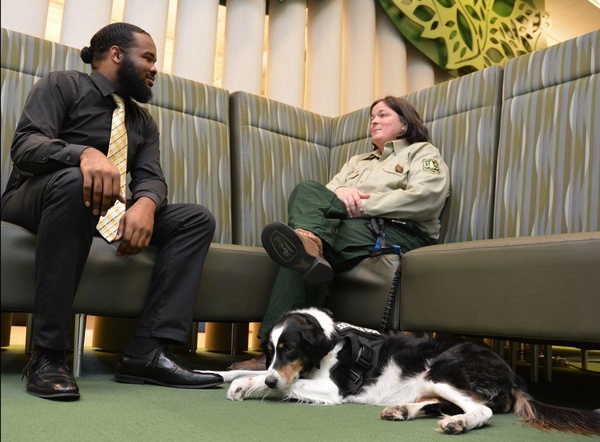
Nothing in ELLAS Animals INC’s website or blog is intended as medical, legal, or financial advice. We receive no compensation for recommendations or reviews.

Hi – I have an 18 month old English Setter who is going through a big fear period right now – I was wondering if you have any advice for fear over unavoidable things. Her two main ones at the moment are riding in the car and going for a walk. She hides in her crate if I get her leash out. We live in a home with a fenced in backyard but she used to love both car rides and walks. I’d hate to give either up. Thanks!!
Hi! Don’t give up, but don’t push it during a fear period. These generally last only a few weeks and you can wait that out so that you don’t entrench a fear. If it doesn’t fade away on it’s own, you can use counterconditioning techniques to build positive associations with these activities to replace the negative associations your dog has developed. If you don’t have a fenced in yard, walks will be unavoidable, but you can keep them short while they’re stressful for your dog. Make sure when that leash comes out, so do the treats.